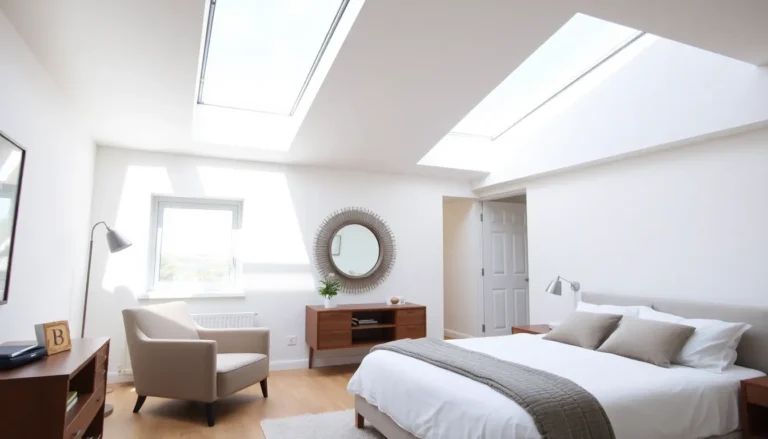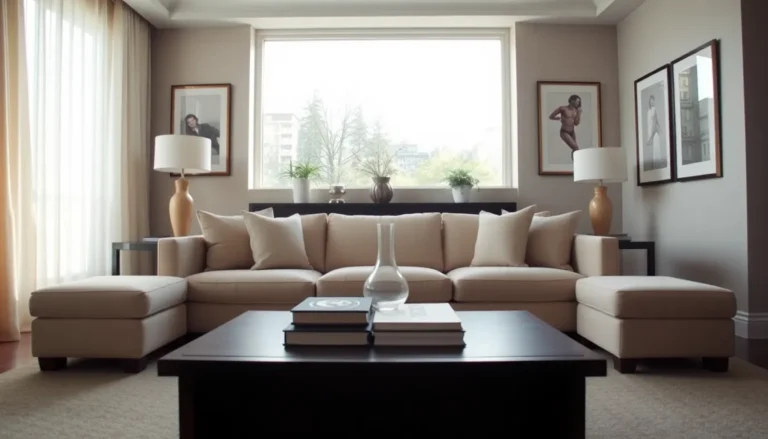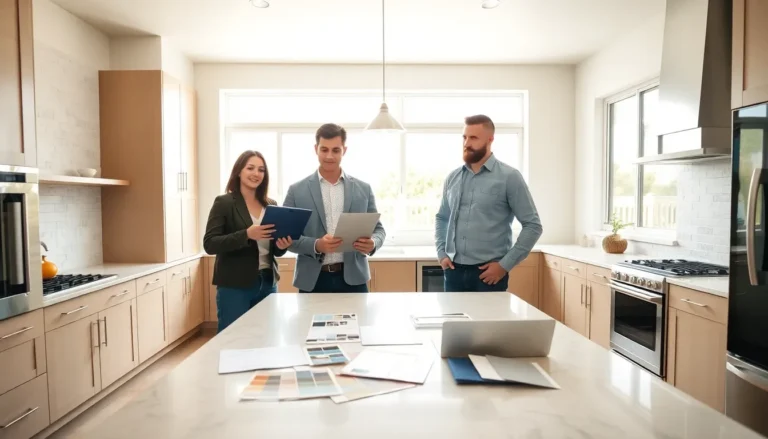Homeownership can feel like a never-ending game of whack-a-mole, especially when those pesky repairs pop up just as your bank account starts to breathe. But what if bad credit is keeping you from fixing that leaky roof or sprucing up the kitchen? Fear not! A bad credit home improvement loan might just be the superhero you didn’t know you needed.
Table of Contents
ToggleUnderstanding Bad Credit Home Improvement Loans
Bad credit home improvement loans provide options for homeowners facing financial obstacles due to poor credit scores. These loans often help individuals manage necessary repairs or upgrades to their properties.
Definition of Bad Credit
Bad credit refers to a credit score generally under 580 on the FICO scale. Such scores indicate a history of late payments, defaults, or high debt levels. Lenders often view individuals with bad credit as higher risk. Homeowners with bad credit face difficulties accessing traditional loans, impacting their ability to secure funding for home improvements. Understanding these scores is essential, as different lenders may have varying criteria for what constitutes bad credit.
Importance of Home Improvement Loans
Home improvement loans play a crucial role in preserving property value. They provide necessary funds for essential repairs, enhancing both safety and aesthetics. Additionally, securing a loan can lead to energy efficiency improvements, resulting in cost savings on utilities. Increased home equity can occur with well-planned renovations, offering financial stability in the long run. Timely access to these loans allows homeowners to address issues before they escalate, ensuring a comfortable living environment.
Types of Bad Credit Home Improvement Loans
Homeowners can explore various loan types tailored for bad credit situations. Each option presents distinct features and benefits, suitable for different financial needs.
Secured vs. Unsecured Loans
Secured loans require collateral, such as the home itself. This type often offers lower interest rates, making repayments more manageable. Unsecured loans, however, do not require collateral. These loans usually come with higher interest rates, reflecting the lender’s increased risk. Homeowners might choose a secured loan for larger projects that need significant funding, while unsecured loans may suit smaller improvements.
Personal Loans for Home Improvements
Personal loans specifically for home improvements provide flexible funding options. Lenders assess an applicant’s credit history and overall financial situation. These loans often come with fixed repayment terms, allowing homeowners to plan budgets effectively. Funds can cover a range of projects, from kitchen remodels to roof repairs. Additionally, some personal loans allow for faster approval processes, helping homeowners address urgent repair needs promptly.
Eligibility Criteria for Bad Credit Home Improvement Loans
Qualifying for bad credit home improvement loans involves several key criteria. Homeowners with poor credit scores often face unique challenges, but understanding these requirements can empower them to secure funding for essential improvements.
Credit Score Requirements
Credit scores significantly affect eligibility for loans. Lenders generally consider scores below 580 as problematic, signaling increased risk. While some lenders might accept scores in the 500s, others could require a minimum of 600. Limited options exist for those with scores under 550; however, specialized lenders sometimes provide alternatives. Borrowers should ensure they check their scores before applying to understand their standing.
Income and Employment Verification
Lenders prioritize stable income and employment when evaluating applications. A steady job with consistent earnings provides assurance to lenders. Typically, applicants need to demonstrate at least six months of income history. Self-employed individuals must provide additional documentation, such as tax returns and profit-loss statements. Verifying income helps lenders assess repayment capability, minimizing risk for both parties.
Pros and Cons of Bad Credit Home Improvement Loans
Bad credit home improvement loans come with advantages and disadvantages for homeowners. Understanding these factors helps in making informed decisions.
Advantages of Using These Loans
These loans provide access to funds for necessary repairs, enabling homeowners to address urgent issues. Loan options may not require excellent credit scores, allowing those with low scores to secure financing. Quick approval processes allow homeowners to receive funds faster for pressing repairs. Some lenders offer flexible repayment terms, making it easier for borrowers to manage monthly payments. Additionally, these loans can improve a property’s value, which is particularly beneficial if future resale is a consideration.
Disadvantages to Consider
Higher interest rates often accompany bad credit home improvement loans, increasing overall borrowing costs. Limited lenders may offer these loans, reducing choices for borrowers. Shorter repayment terms can result in larger monthly payments, straining budgets. Furthermore, reliance on secured loans may put a homeowner’s property at risk if repayments falter. Additional fees and costs might also arise, impacting the total cost of the loan and budget planning.
Tips for Securing a Bad Credit Home Improvement Loan
Securing a bad credit home improvement loan involves strategic steps that can enhance chances for approval.
Improving Your Credit Score Before Applying
Improving a credit score before applying for a loan can significantly boost approval odds. Paying off outstanding debts lowers the credit utilization ratio, which enhances overall credit health. Additionally, making timely payments on existing bills establishes a positive payment history. Monitoring the credit report for errors also reveals areas of improvement. Addressing inaccuracies can lead to quick boosts in credit scores. Engaging in these steps months before applying can maximize benefits and strengthen the loan application.
Finding the Right Lender
Finding the right lender plays a crucial role in securing a bad credit home improvement loan. Researching online lenders can provide various options tailored for low credit borrowers. Comparing interest rates and loan terms ensures that homeowners select the most favorable deal. Reading reviews and testimonials offers insights into lender reputations. Connecting with local credit unions or community banks often reveals personalized lending options. Exploring specialized lenders who cater to bad credit borrowers can also discover potential funding sources and increase chances for success.
Navigating home improvements with bad credit can be challenging but it’s not impossible. Homeowners facing financial strain have options available to them through bad credit home improvement loans. These loans can provide the necessary funds to tackle urgent repairs and enhance property value.
By understanding the types of loans available and the eligibility criteria, homeowners can make informed decisions. It’s essential to weigh the pros and cons carefully while considering the long-term implications of each option. With the right approach and research, securing a loan can lead to a safer and more comfortable living environment.





